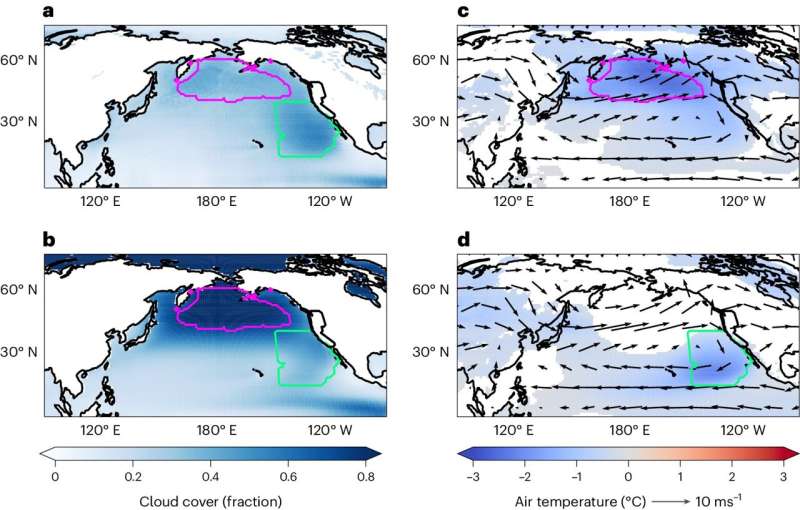
A combined team of Earth scientists and climate specialists at the University of California San Diego and the National Center for Atmospheric Research has found via modeling that geoengineering projects such as marine cloud brightening can have unexpected and sometimes harmful consequences.
In their study, published in the journal Nature Climate Change, the group designed models to predict what might happen if large-scale marine cloud brightening projects were undertaken in two major regions in the western United States.
The researchers found that the artificial clouds would reduce temperatures in the western U.S., primarily California—reducing risk of dangerously high temperatures by as much as 55%. But they also found the same clouds would reduce rainfall amounts, both in the U.S. and other parts of the world.
The research team also found that if the MCB project continued to the year 2050, its benefits would taper off and heat waves in Europe would become much more common, showing that engineering projects can lead to unforeseen consequences in other parts of the world.